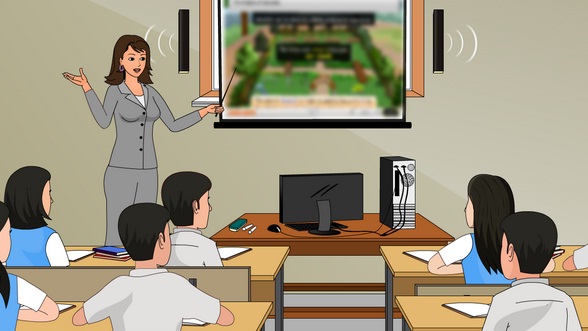In this article we will learn about Stative and Dynamic Verbs with the help of examples –
- The barrister was examining the case.
- She has been preparing for her examination for six months.
- The sun is shining over her head.
- Sohan is now a shop-keeper. ( ‘ Sohan is now being a shop-keeper ‘ is wrong )
- John knows the right answer. ( ‘ John is knowing the right answer ‘ is wrong )

Let us use following examples to know Stative and Dynamic Verb –
From the above examples we can observe that the verbs in the sentences 1 to 3 admit the progressive aspect and therefore they are called Dynamic verbs, whereas the verbs in the sentences 4 and 5 do not admit the progressive aspect and therefore they are called Stative verbs.
This sort of non-admittance ( not admitting progressive ) may be a permanent or occasional characteristic of the Stative verb. Most of the stative verbs can be given dynamic use only.
Dynamic verbs can further be divided in to five classes and the stative verbs can be divided into two classes –
Dynamic Verbs –
- Activity Verbs – Activity verbs are those which show some action. The verb of this class are frequently used in progressive aspect to indicate incomplete actions in progress. For example – ask, beg, abandon, call, eat, drink, help, listen, learn, look at, rain, play, read, say etc.
- Process Verbs – Verbs which performs action which are carried out in order to achieve a particular result. They are also used in progressive aspect to show incomplete event in progress. For example – Change, deteriorate, grow, slow down, widen, mature etc.
- Transitional Event Verbs – Verbs of this class are used to indicate completion of an action in he simple aspect but only approach to transition in the progressive aspect. For example – die, fall, land, arrive, lose etc.
- Verbs of Bodily Sensation – Verbs of this class indicate sensations in the body. They are used mostly in simple or progressive aspects with a little change in the meaning. For example – Ache, feel, hurt, itch etc.
- Momentary Verbs – These verbs are used to indicate or show an action the duration of which is very short. Progressive aspects of such verbs indicates only repetition of the action. For example – Hit, jump, kick, knock, nod, tap etc.
Stative Verbs –
- Verbs of Inert Perception and Cognition – Verbs of this class indicate inert perception and cognition. For example – abhor, adore, astonish, like, love, mean, mind, please, prefer, suppose, taste, think, want, wish etc. Some of these verbs may take a subject other than the recipient.
- Relational Verbs – Verbs of this class are used to show relation. Examples – apply to, belong to, concern, contain, deserve, lack, matter, own, possess, require, sound, tend etc.